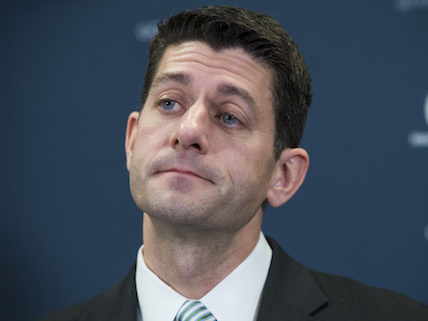

| Online: | |
| Visits: | |
| Stories: |

| Story Views | |
| Now: | |
| Last Hour: | |
| Last 24 Hours: | |
| Total: | |
Is the Sky the Limit for the Debt Ceiling?
 When the national debt ceiling’s suspension was automatically lifted March 15, yet another countdown commenced. Congress will be compelled to raise the government’s borrowing limit again before April 28 and fund the government. Meanwhile, the Congressional Budget Office released yet another report showing that our debt crisis may be here sooner than later and be bigger than ever.
When the national debt ceiling’s suspension was automatically lifted March 15, yet another countdown commenced. Congress will be compelled to raise the government’s borrowing limit again before April 28 and fund the government. Meanwhile, the Congressional Budget Office released yet another report showing that our debt crisis may be here sooner than later and be bigger than ever.
Addressing these budget deadlines should be done with the CBO’s warning in mind. It goes something like this: The government’s overspending has produced a lot of debt, and it’s adding debt at a pace faster than the economy is growing—so it will only get worse.
Public debt, or the money that the government owes to domestic and foreign investors, stands at 77 percent of gross domestic product—or roughly $15 trillion. Our gross debt—the money the government owes to foreign and domestic investors, as well as other accounts in the government—is well past 100 percent of GDP and will soon reach $20 trillion. Unlike previous times when our debt spiked, we’re not in the middle of a worldwide recession or war. Short of life-changing innovations, there’s little hope that these levels will go down or stabilize.
These debt levels may not be a problem now, but that won’t last. As spending as a share of GDP grows from 20.7 percent today to 30 percent in 2047, our public debt will reach 150 percent under the current law. That’s 5 percent higher than the CBO projected in January.
In the next decade, net interest will go from $270 billion to $768 billion. The CBO also reports that the share of the budget devoted to those payments is growing, from 7 percent today to 21 percent in 2047. Assuming the CBO isn’t underestimating how much the government will spend or the interest rate levels (which it probably is), a fifth of the budget is going to be spent on interest payments. That money will be paid by future generations for the past generations’ overspending.
So now back to Congress’ deadlines. First, all we can hope for is that Congress will meet the April 28 deadline without too much drama. In a perfect world, Republicans will have a great plan for repealing and replacing Obamacare. I’m not hopeful, because like the Democrats, they are focused on finding a way for most Americans to get someone else to foot their health care bill. This wrong goal and misguided approach will only continue to produce high health care costs.
However, before there was Obamacare, there were Medicare, Medicaid and Social Security. According to economist Paul Winfree, the federal government’s unsustainability is driven by 2 percent of nearly 1,800 spending accounts funding government activities—mainly public health care programs and Social Security. The spending on those accounts is about 60 percent of gross spending over 10 years. It cannot indefinitely continue to increase faster than gross domestic product as currently projected. There must be reform.
There is a chance that Republicans will actually put in place some needed reforms for Medicaid. Overall spending on the program is exploding while providing a subpar service to its beneficiaries. Shamefully, nobody is serious about reforming Medicare and Social Security. That needs to change, and the next debt ceiling debate provides an opportunity to take the first steps in that direction.
To be sure, Congress will have no choice but to raise the debt ceiling and must not default. However, it would be irresponsible for lawmakers to increase the ability of the government to accumulate more debt without implementing some institutional or budget constraint reform as part of this effort. Budget constraints that have come out of past debt limit fights include the 2011 Budget Control Act and the 1987 changes to the Gramm-Rudman-Hollings reforms.
The best place to start would be a cap on all spending or a strict cut-as-you-go system. It might force reluctant lawmakers to reform Medicare and Social Security rather than subject the programs to arbitrary across-the-board cuts.
However, that would be only a short-term remedy. What needs to happen is a fundamental reform of the programs that are growing out of control and redistributing massive amounts of wealth from the relatively younger and poorer in society to the relatively older and richer. Short of that, we won’t address our debt issue and will have to deal with the main consequences—namely, higher taxes and even slower growth.
COPYRIGHT 2017 CREATORS.COM
Source: http://reason.com/archives/2017/04/06/is-the-sky-the-limit-for-the-debt-ceilin


